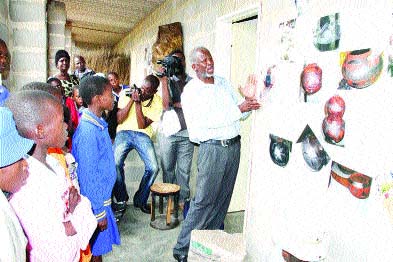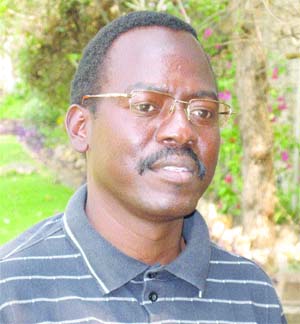Amagugu Heritage Centre, a hands-on illustration of cultural preservation

To every person, culture forms the very base of his or her identity.
However, of late there has been a widespread outcry from elders in society that cultural practices are slowly being eroded and being replaced by European ones.
Indeed, culture is the primary influence on who we are as people and there is lot of importance of cultural heritage in a small country like ours.
Our cultural heritage has a lot of bearing in the history of how early communities in southern and tropical Africa developed so all of us, not only in Zimbabwe but also across the region as a whole, should work hand in hand to preserve our cultural heritage because our cultures are more or less the same.
We should therefore try to save our identity; after all, our cultural heritage is the one which introduces us Zimbabweans in the outer world.
As we all know Zimbabwe is well known for its ruins and the rather unique style of Iron Age architecture exhibited at Khami and Great Zimbabwe. Hence being the citizens of this country, we should try to maintain our identity in the best way possible.
Having outlined my perspective on everyone’s responsibility to safeguard our cultural heritage, the recently opened Amagugu International Heritage
Centre (AIHC) in Matobo District, Matabeleland South, quickly comes to my mind.
The AIHC, founded by renowned historian, Mr Pathisa Nyathi, opened its doors to the public on 24 February. The site is aimed at researching and documenting African cultural practices and rituals.
Mr Nyathi, who is the centre’s executive board chairperson, said AIHC’s objective was to research on cultural elements in local communities and to develop an inventory of cultural artifacts in the communities. And this blends in well with the responsibility of passing on our ancestors’ cultural practices.
“This will be a centre for hands-on participation whereby people who will visit this site will participate in a lot of cultural activities such as learning how our ancestors made fire through traditional ways,” said Mr Nyathi as he officially opened the site, located 60 kilometres along Bulawayo-Kezi Road.
My brief visit to the site on the fateful Friday was quite an educational one, as I got to see some of the cultural objects that I had only learnt about at primary school level and never got to see.
For the first time in my 24-year-long life I got to see how our ancestors made fire, through a process termed ukuphehla uzwati (stirring sticks).
The centre’s uniqueness is that it processes cultural artifacts from raw materials such as traditional trees planted at the centre and labelled with their botanical and Ndebele names. Unlike in a museum where tourists and students see a finished product, Amagugu makes this project a participatory one whereby visitors are involved in processing some of the products.
Mr Nyathi however bemoaned the sad reality that: “Children learn about cultural artifacts in class, but they never get the chance to really see the objects they learn about.”
He said if one asked any pupil at primary school about cultural objects and utensils, chances are they would know about them, but they do not know what they looked like in reality.
The hands-on illustrations by Mr Nyathi during my visit to the site, however, brought me closer to our cultural practices such as how to produce mealie-meal, traditional brew from marula and traditional games, most of which have fallen out of favour in the modern society.
People who visit the site would be taught cultural practices and how to preserve our natural heritage such as trees and soils and how these resources were used by our ancestors.
It would also develop an education programme that shall link the centre to the education sector to facilitate intangible cultural heritage.
According to Mr Nyathi, the centre would have a compartment where they would collect artifacts that are believed to fit into the local culture and put them in a museum where they would be exhibited.
“We intend to develop skills and knowledge relating to traditional crafts and provide a market for these crafts among visitors, learners and tourists,” said Mr Nyathi.
The heritage site comprises different departments that include pottery, crafts, wood and leather sections. Each section has an expert who is ready to explain to anyone who visits the centre.
AIHC has a part dedicated to traditional games that are no longer being played.
“We want tourists and students to come to the centre and see how traditional mortar is made and at the same time learn about how to pound traditional grains using the same object,” Mr Nyathi said.
The centre has a documentation section where all research into areas such as traditional games and food are documented. It is envisaged that the site would have a restaurant to serve African dishes.
Culture and its meaning have come a long way and by presenting certain dominant regional identities as common identity like Amagugu International Heritage Centre would also help scale up other forms of cultural expression and thought.
With that said there is however a need for local culture(s) to be conveniently packaged, patronised, legitimised by us so that we are able to sell the name and image of Zimbabwe as a people.
To pull down the curtain, here is a parting quote, “Primitive (first) skills are our shared inheritance. It is the shared thread which links us to our prehistory and binds us together as human beings.” (Steve Watts).









Comments